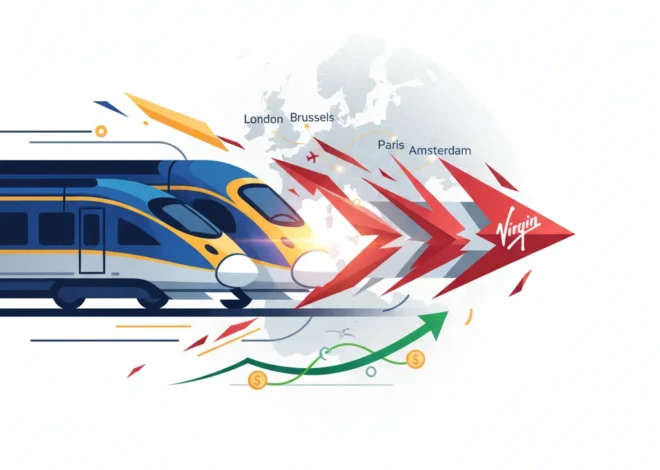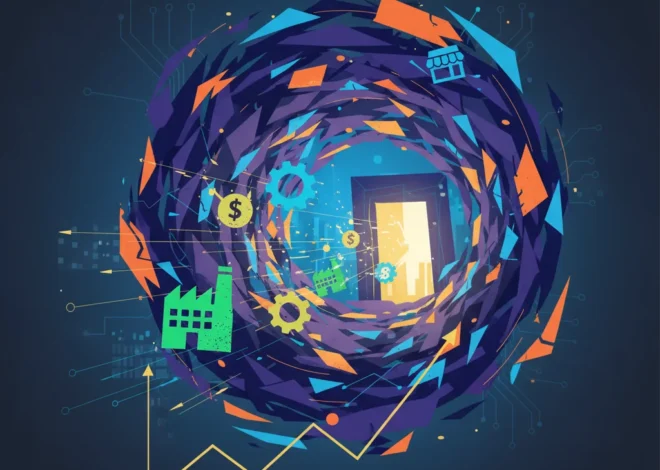
O2’s Pricing Fiasco: A Masterclass in What Not to Do for SaaS and Tech Startups
Your phone bill just went up. Again. For millions of O2 customers, this familiar annoyance recently came with a bitter twist. The UK’s media regulator, Ofcom, has publicly slammed the mobile giant for raising prices by more than was advertised when customers signed their contracts. It’s a classic case of promise-versus-reality, a small-print saga that leaves consumers feeling duped and devalued.
But hold on. Before you dismiss this as just another telco titan flexing its muscles, stop and look closer. This isn’t just a story about a phone bill. It’s a flashing red warning light for the entire tech industry, from the most nimble startups to established SaaS behemoths. In an economy built on subscriptions, recurring revenue, and long-term customer relationships, O2’s misstep is a powerful, real-world case study in how to shatter trust—the single most valuable asset a modern company can possess.
The core issue revolves around a complex, and frankly confusing, pricing mechanism. O2, like many of its competitors, implemented mid-contract price hikes linked to inflation. However, the regulator found that the actual increase surpassed what the advertised formula suggested. While the financial impact on an individual might be a few pounds, the reputational damage is far more significant. It’s a breach of the unwritten contract of clarity and fairness, a lesson that every developer, founder, and tech professional needs to understand intimately.
In this deep dive, we’ll dissect the anatomy of this trust-breaking event and translate it into actionable insights for the world of software, AI, and digital innovation. We’ll explore how legacy pricing models clash with modern customer expectations and how technology, from automation to machine learning, can be either a tool for transparency or a weapon of obfuscation.
The Anatomy of a Broken Promise: Deconstructing the Telco Trap
At the heart of the controversy is the way O2 calculated its price increase. Many UK mobile and broadband contracts contain clauses that allow for an annual price rise linked to an inflation measure—either the Consumer Price Index (CPI) or the Retail Price Index (RPI)—plus an additional fixed percentage, often 3.9%. This “inflation-plus” model is already a point of contention for consumer advocates, but O2’s execution is what drew Ofcom’s ire.
The regulator stated it was “disappointed” that the company raised prices beyond what was clearly laid out. This discrepancy, however small, transforms a standard (if unpopular) price hike into something that feels deceptive. It preys on the assumption that most customers won’t meticulously re-calculate the percentages buried in their terms of service. When they do, or when a watchdog like Ofcom does it for them, the trust evaporates instantly.
This isn’t just a PR blunder; it’s a fundamental failure to align business practices with customer-centric values. In the fast-moving world of tech, where switching costs for a SaaS product can be remarkably low, this kind of misstep is a self-inflicted wound. It creates an opportunity for competitors who prioritize transparency and simplicity. In fact, the backlash against these models has been so significant that Ofcom has announced new rules, effective later in 2024, to ban inflation-linked, percentage-based price rises altogether, forcing providers to state any price increases in pounds and pence upfront.
Let’s compare this legacy approach to the models that power the modern digital economy. Below is a comparison of the typical telco model versus common pricing strategies used by innovative software and SaaS companies.
| Pricing Model | How It Works | Pros for the Business | Cons for the Customer |
|---|---|---|---|
| Telco “Inflation-Plus” | Base price + variable inflation rate (e.g., RPI) + a fixed percentage (e.g., 3.9%). Price changes mid-contract. | Protects margins against inflation; predictable revenue growth. | Unpredictable, confusing, feels unfair, hard to budget for. Lack of transparency. |
| SaaS Tiered Pricing | Multiple packages (e.g., Basic, Pro, Enterprise) with different feature sets at fixed monthly/annual prices. | Clear value proposition; caters to different customer segments; easy to understand. | May pay for unused features; forced to upgrade for one key feature. |
| Usage-Based/Metered | Pay only for what you use (e.g., API calls, data storage, compute hours). Common in cloud services. | Scales with customer success; low barrier to entry; seen as fair. | Can be difficult to predict costs; potential for unexpected high bills. |
| Per-User Pricing | A fixed price per user per month. Simple and common for collaboration tools. | Extremely simple to understand and forecast revenue. | Can become expensive for large teams; discourages adoption within a company. |
The contrast is stark. While modern SaaS models have their own complexities, their primary goal is to align the price paid with the value received. The telco model, as demonstrated by the O2 case, often feels designed to extract maximum value with minimum clarity.
The Automation Paradox: Deconstructing the AWS Outage That Shook the Internet
The Double-Edged Sword of Automation and AI
It’s tempting to imagine a room full of executives manually plotting these price hikes, but the reality is far more automated. Modern enterprise billing is a marvel of software engineering, a complex dance of databases, APIs, and business logic running on the cloud. This is where automation and artificial intelligence enter the picture, and where their ethical implications become critical.
On one hand, AI and machine learning can be powerful forces for good in customer finance. An ML model could analyze a user’s consumption patterns and proactively suggest a cheaper plan, building immense goodwill. Automation can ensure billing is timely, accurate, and provides clear, itemized breakdowns, reducing customer support tickets.
On the other hand, these same tools can be used to create and manage the kind of opaque pricing structures that led to O2’s problems. An algorithm can be optimized to maximize “revenue uplift” across millions of customers, calculating the precise, legally-justifiable-but-ethically-questionable increase that will generate the most income with the least immediate churn. The system works “as designed,” but the design itself is flawed because it divorces the action (raising a price) from the human consequence (a customer feeling cheated).
This places a profound responsibility on the shoulders of developers and product managers. The act of programming a billing system is not a neutral one. The choices made—how to display information, what to highlight, what to bury in a sub-menu—directly impact the company’s relationship with its customers. The push for innovation must be tempered with a commitment to transparency. A truly “smart” system isn’t one that can squeeze out an extra 0.5% from a price hike; it’s one that can explain a customer’s bill in plain language they can actually understand.
Europe's Titans Assemble: Why Their New Space Alliance is a High-Stakes Bet on Software and AI
The Cybersecurity of Trust: When a Price Hike Feels Like a Breach
In the tech world, we spend countless hours and billions of dollars on cybersecurity. We build firewalls, encrypt data, and train employees to spot phishing attacks. Why? To protect our assets and, crucially, to maintain our customers’ trust. A data breach is catastrophic not just because of the data lost, but because it violates the fundamental promise that a company will act as a responsible steward of its users’ information.
A “trust breach,” like the one O2 is being accused of, operates on the same principle. While no data was stolen, the customer’s confidence in the company’s word was compromised. The feeling of vulnerability and betrayal is remarkably similar. According to a 2023 PwC survey, 87% of consumers say data privacy and security is a very important factor in their trust in a company, but transparent communication is just as vital. When a bill is unexpectedly high, the customer’s mental threat model activates. “Are they cheating me? What else aren’t they telling me? Can I trust this company with my payments and personal data?”
Viewing customer trust through a cybersecurity lens offers a powerful framework for tech leaders.
- Vulnerability: Opaque contract language is a vulnerability waiting to be exploited.
- Threat Actor: The threat can be internal—a business culture that prioritizes profit over people.
- Attack Vector: The “attack” is the confusing bill or the unexpected price notification.
- Impact: The impact is churn, reputational damage, and regulatory scrutiny.
Protecting the “cybersecurity of trust” means designing systems and policies that are resilient against ambiguity and deception. It means treating every customer touchpoint, from the pricing page to the monthly invoice, as a critical piece of security infrastructure.
Actionable Lessons for Startups and Innovators
O2’s public stumble provides a rich source of learning for any entrepreneur building a tech company today. Here are the key takeaways to build a business that’s future-proofed against this kind of trust erosion.
- Embrace Radical Transparency in Pricing: Your pricing page should be your clearest and most honest piece of marketing. Avoid asterisks, footnotes, and complex formulas. If your pricing needs a 20-page PDF to explain, you’re doing it wrong. Model your pricing on clarity, not on what you can get away with.
- Use Technology for Clarity, Not Obfuscation: Leverage the power of your software stack to empower your customers. Use AI to provide predictive billing alerts (“Your usage is trending high this month, you might want to…”). Use automation to send simple, human-readable summaries of any contract changes. Make your user dashboard a model of clarity.
- Build a Moat of Trust, Not Contracts: In the age of cloud computing and low switching costs, long-term contracts are a weak defense against churn. Your best moat is a deep reservoir of customer trust and goodwill. A customer who trusts you will forgive a service outage. A customer who feels tricked will leave over a dollar. Prioritize the long-term relationship over the short-term revenue gain.
- Innovate in Communication: The telco model of sending dense, legalistic letters or emails about service changes is dead. Use modern tools. Create a short video explaining the changes. Write a clear, empathetic blog post. Host a Q&A with a product manager. True innovation isn’t just about your product; it’s about how you communicate with the people who use it.
The AI Treadmill: Why Your Team's Skills Are Already Obsolete (And How to Fix It)
Conclusion: The Currency of the Future is Trust
The story of O2 and the regulator’s disappointment is more than just a fleeting headline. It is a microcosm of the central challenge facing businesses in the digital age. As technology, from AI to the cloud, automates more of our interactions, the human elements of trust, transparency, and fairness become more—not less—important.
For the developers writing the code, the entrepreneurs designing the business models, and the leaders setting the company culture, the lesson is clear. You can build your company on a foundation of complex contracts and revenue-optimized algorithms, or you can build it on a foundation of clear promises and customer value. The O2 incident shows us that the former is a house of cards, vulnerable to the slightest gust of regulatory wind or public opinion. The future belongs to those who understand that in a world of infinite choice, the only sustainable competitive advantage is the trust you earn every single day.


